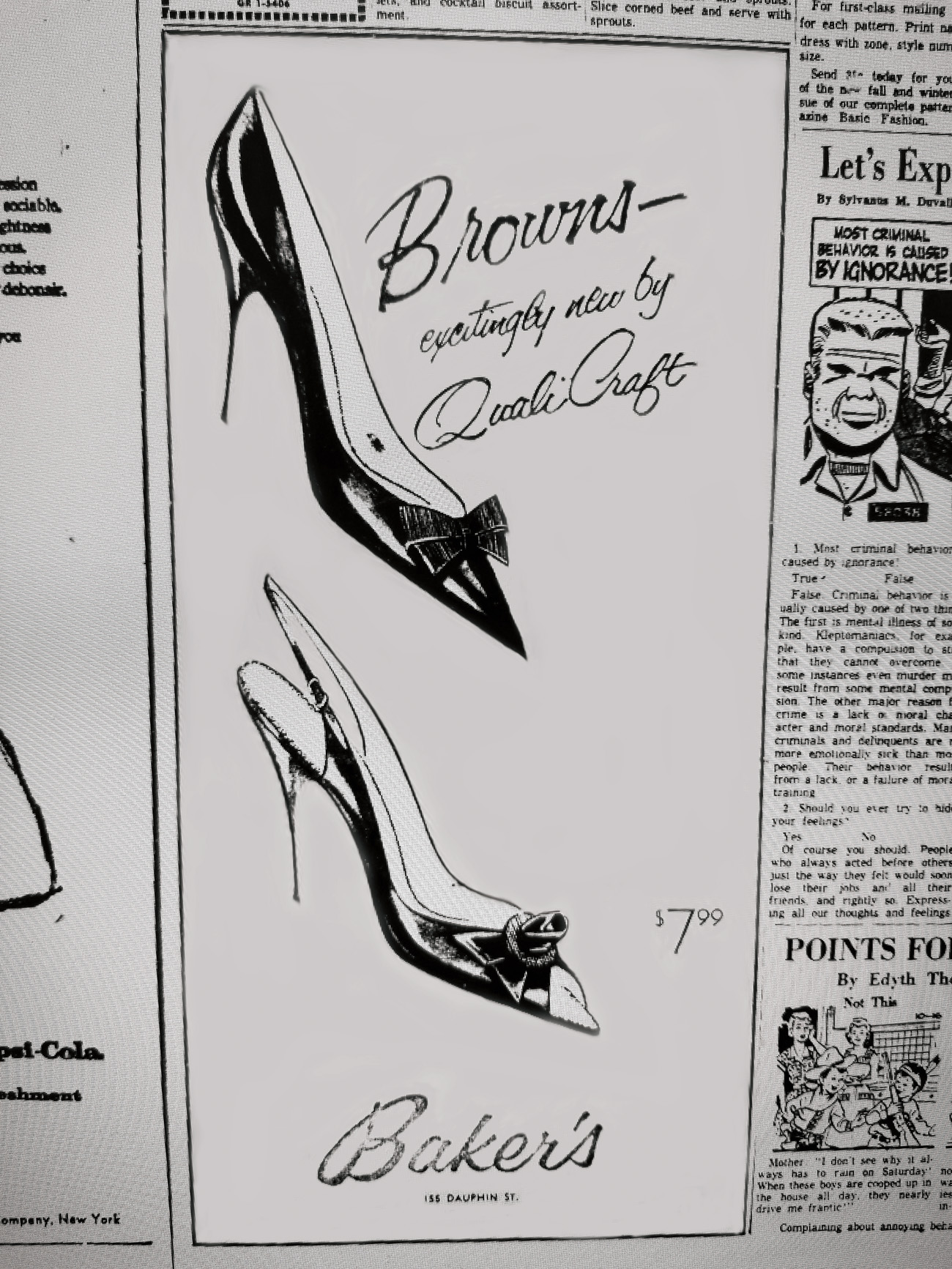
On October 15, 1959, a city ordinance went into effect prohibiting women from wearing shoes with heels higher than an inch and a half and less than an inch in diameter. The so-called “spike heels” were high fashion and led to a growing number of lawsuits filed against the city when the wearers got them stuck in sidewalk grates. Claims ranged from twisted ankles and broken bones to damaged shoes.
The city commissioners (forerunners of the current city council members) had enough. Upon notice of yet another lawsuit against the city, Commissioner Charles Hackmeyer exploded and said, “That makes 50 times we’ve been sued for that kind of rot. I move we do something about it!”
The announcement of this unusual ordinance became front-page news around the U.S. Columnists began a lively debate on the dangers of wearing the shoes. A Los Angeles radio station interviewed Mayor Joe Langan about Mobile’s new law, and a U.S. serviceman in Korea even wrote the city, begging officials not to ban women’s form-fitting sweaters, which were also popular in those days.
Permit Required
Fashion-conscious Mobilians could still wear those spike heels if they applied for a permit with the city. When the permit portion of the law was announced, the switchboard at City Hall was swamped with calls. At 8 a.m. on October 16, 1959, 38 women were in line to apply. As part of the process, each applicant signed a waiver agreeing to hold the city harmless from any injuries suffered while wearing their heels.
Mobile’s effort was apparently not the first in America. In the 1920s, as skirts got shorter and the heels got higher, a bill in conservative Utah proposed that wearers of heels higher than one-and-a-half inches would be fined up to $500 and face up to a year in jail. By the late 1950s, major airlines, fearing a puncture to metal cabin floors, outlawed high heel shoes altogether.
Experts in 1963 estimated that the popular stiletto was responsible for the necessary replacement of a half billion dollars’ worth of damaged flooring in the United States. By the end of that decade, American floors would be saved, when a new generation of women began shedding their high heels for more sensible shoes. But fashion comes in circles. Queen Elizabeth I (1533 – 1603) preferred high heels, and first lady Melania Trump has been criticized for wearing stilettos in recent months.
Regardless of the fashions though, Mobilians had better avoid sidewalk grates while wearing their high heels. The city is still protected from an attempted lawsuit should an injury occur, although it is unclear when the last permit was issued.





